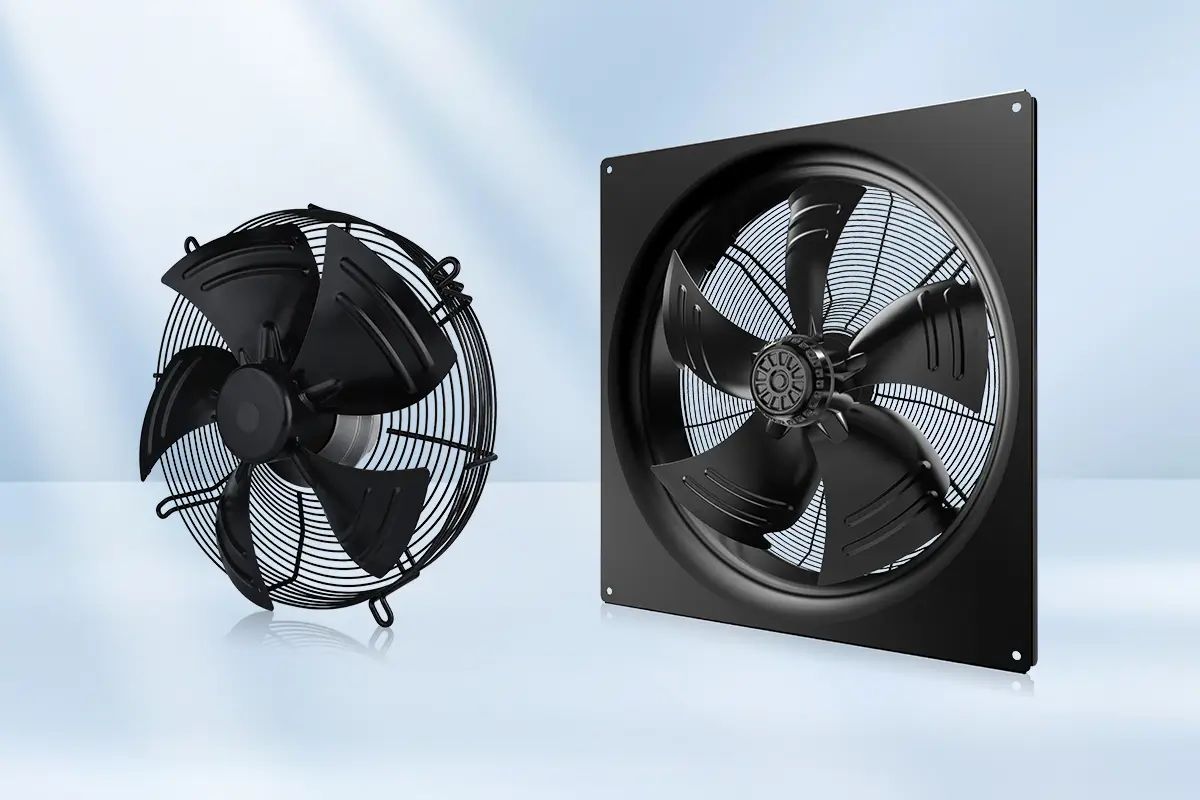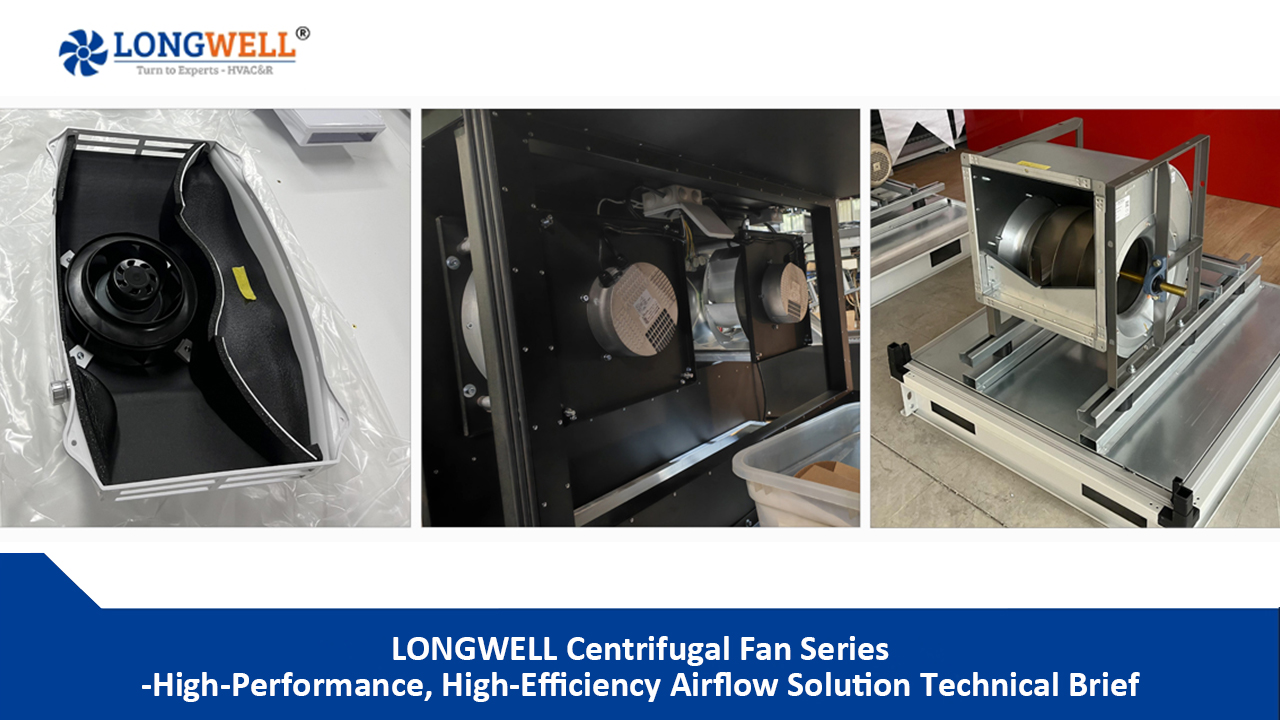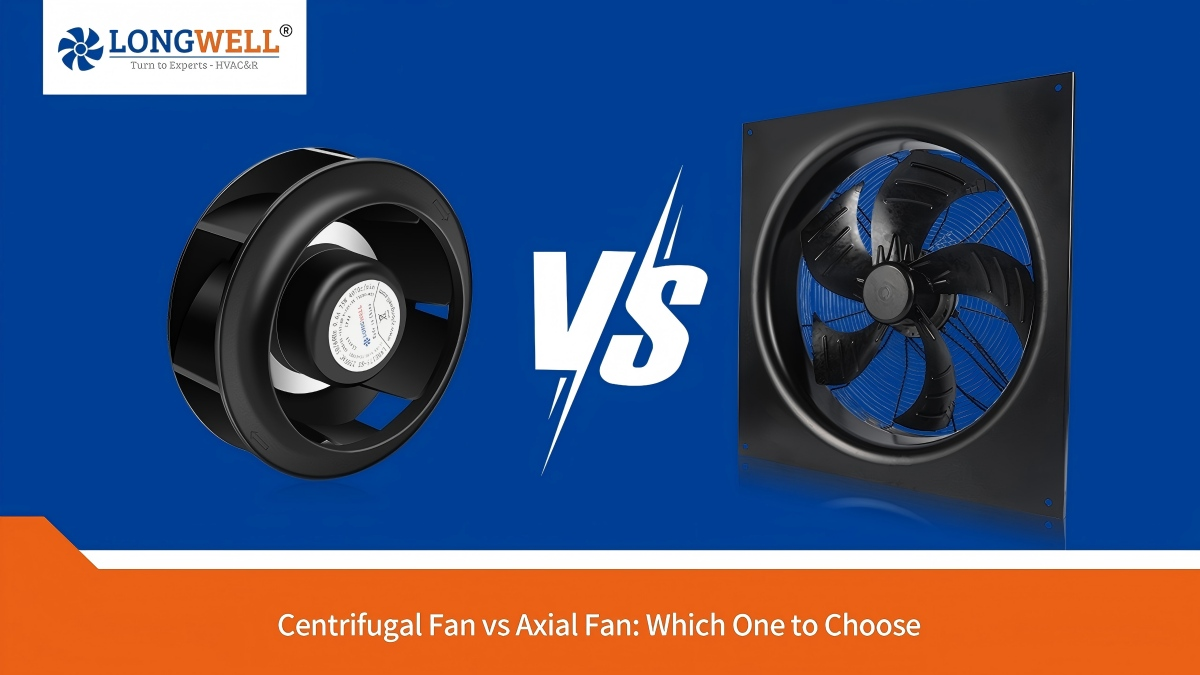Key Highlights
- A centrifugal fan makes airflow by increasing air pressure in a circular way.
- An axial fan makes airflow by pulling air straight through the fan along the shaft.
- A centrifugal fan is better for high-pressure uses, like air conditioning.
- An axial fan works better for jobs needing a lot of airflow, such as ventilation.
- The efficiency and performance of these two fans depend on what you need.
- Choosing a centrifugal fan or an axial fan depends on factors like power supply, noise level, and how you need the air to circulate.
Introduction
Centrifugal fans and axial fans are key parts in many places. Each fan type has unique features and is available in different sizes. Understanding the differences between these fan designs is important to pick the right one for your needs. Centrifugal fans are good for making higher pressure airflow. In contrast, axial fans can manage large volumes of air, but at lower pressures. This comparison looks at how each fan operates, where they are used, and how efficient they are. This information will help you make smart choices based on what you want.
Understanding Centrifugal Fans

Centrifugal fans use fan blades to change kinetic energy into potential energy. They are great for moving air when we need more volume and pressure. There are different types of centrifugal fans, including centrifugal blowers, which primarily differ based on the angle of their blades. These fans are commonly used in air conditioning and drying systems because they handle high flow rates well. Their unique design allows them to move large volumes of air to specific areas. This makes them ideal for large spaces and heat exchange units.
The Mechanics Behind Centrifugal Fans
Centrifugal fans use energy from a motor to create more pressure and airflow. The fan blades spin and draw air into the air intake of the fan housing. As the air moves towards the center of the fan, it increases in pressure due to centrifugal force generated by rotating impellers. This high-pressure air is then pushed outwards in the desired direction. The design of these fans allows them to effectively move air in different situations that need higher pressure airflow.
Key Applications and Advantages
Centrifugal fans are commonly used in air conditioning, drying systems, and heat exchange units. They effectively provide suction and move large volumes of air in large spaces. On the other hand, axial fans are better for cooling and ventilation. These fans offer high flow rates but lower pressure. You can often find them in electronics for thermal management. Centrifugal fans, including various DC models, have higher directionality. This helps direct air to certain areas. Axial fans are durable and produce less audible noise.
Exploring Axial Fans

Axial fans are commonly used to cool things down. They pull air in the same direction as their fan blades. This creates airflow and helps move large volumes of air at low pressures. They don’t use a lot of power to work. This is why they are great for ventilation and cooling electronics. Axial fans have a simple design, with fan blades attached to a hub in the center. This makes them lightweight, quiet, and affordable. You can find these fans in many places like laptops and big cooling systems. They do a good job of keeping things cool.
How Axial Fans Operate
Axial fans pull air in the same direction as the fan shaft. The fan blades then push the air straight out. This type of fan is useful in areas that need a high flow rate and low pressure, like in ventilation and cooling systems. AC axial fans work well and can move large volumes of air.
Primary Uses and Benefits
Centrifugal fans are used where higher pressure airflow is needed through ductwork. They can handle particulates well. These fans are great for cooling systems and drying processes. Their design allows them to move air effectively in large spaces. This makes them ideal for heat exchange units.
Axial fans are great when you need to move a large volume of air but at lower pressures. You usually see them in air conditioning and ventilation systems. The best part about axial fans is their high flow rate. They are ideal for situations where it’s important to move high volumes of air.
Comparative Analysis: Centrifugal Fan vs Axial Fan
Centrifugal fans are great at making higher pressure. They push air through their blades. On the other hand, axial fans create lower pressure but can move a lot of air, making them ideal for tasks that require lesser volumes of air. Centrifugal blowers are best for jobs that need high flow rates. This is especially true for air conditioning systems and cooling big spaces. Axial fans, like propeller fans, are better for tasks such as drying systems and heat exchange units. These jobs need high volumes of air. Choosing between these types of fans depends on your specific area and the amount of air you need.
Efficiency and Performance
Centrifugal fans are often better than axial fans. They can create more air pressure. This is because the design of centrifugal fan blades helps increase air pressure. They change kinetic energy into potential energy. This makes them great for places where airflow resistance is high or when air needs to go in a specific direction. Axial fans can move large volumes of air but with less pressure. In contrast, centrifugal fans provide high-pressure airflow effectively.
Suitability for Different Environments
Centrifugal fans are ideal for jobs that need strong pressure. You can find them in air conditioning systems, drying systems, and heat exchange units. These fans are good at moving air over large areas and can easily handle hot air problems. Axial fans, however, are better for situations that require high volumes of air but at lower pressure. A good example is cooling laptops. Their design directs airflow to a specific area.
Conclusion
In short, the best choice between a centrifugal fan design and an axial fan depends on your needs. Centrifugal fans are great for higher pressure. They are often found in air conditioning and drying systems. Axial fans are good for moving large volumes of air at low pressure. You will see them used in cooling and ventilation. When you pick the right fan type, think about your airflow needs, noise levels, and how much space you have. Make a smart choice that fits your specific needs.
Frequently Asked Questions
What Factors Should I Consider When Choosing Between a Centrifugal Fan and an Axial Fan?
When choosing between a centrifugal fan and an axial fan, consider several factors including electromagnetic noise. Examine your airflow needs and pressure levels. Check the noise limits and space you have available. Also, think about energy use. Understanding these points will help you select the right type of fan for your requirements.



